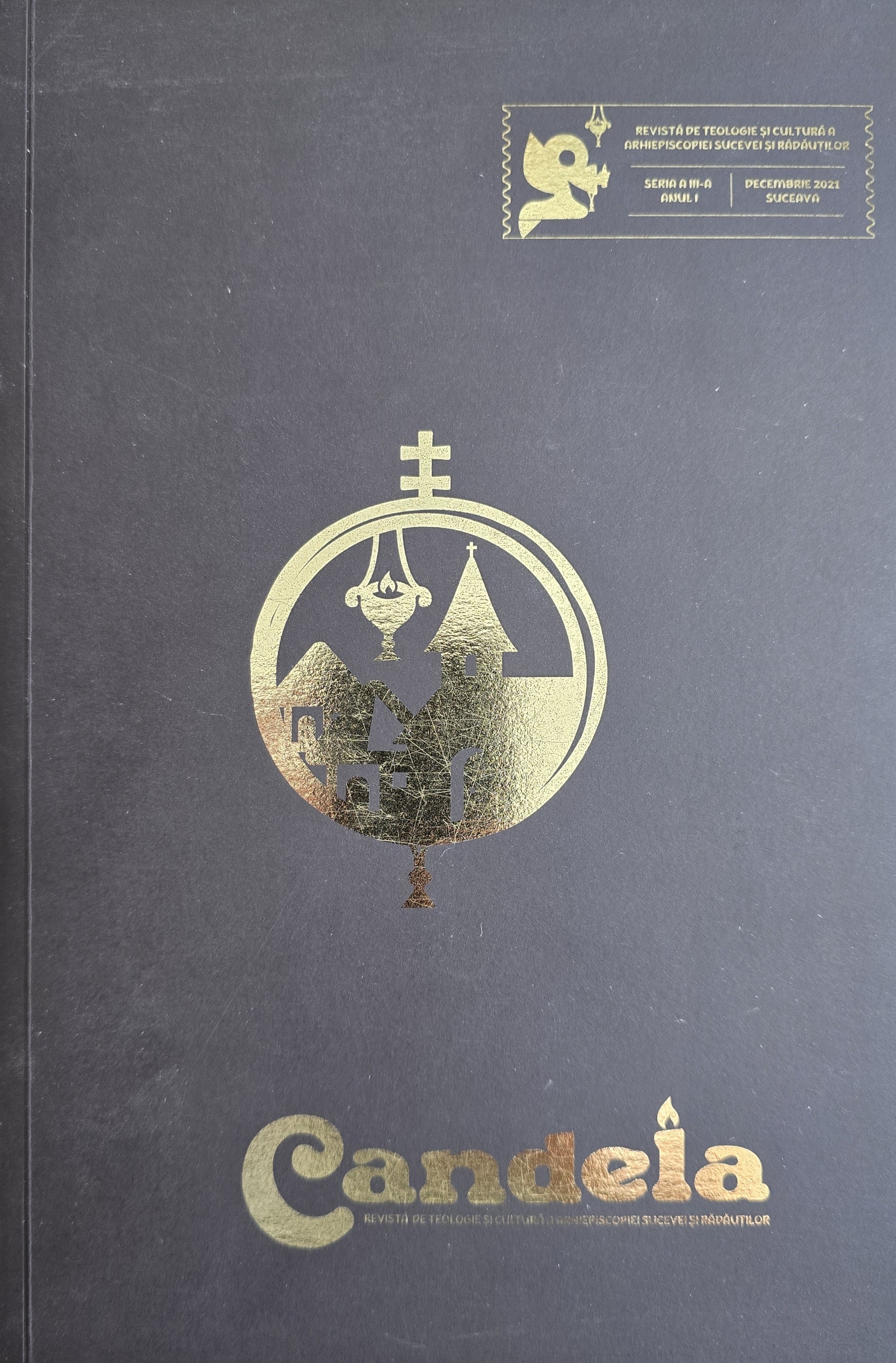Sf. Ierarh Petru Movilă, mare apărător al Ortodoxiei: contextul, lucrarea, importanța
St. Hierarch Petru Movilă, great defender of Orthodoxy: Context, work, importance
Author(s): Ion VicovanSubject(s): Christian Theology and Religion, History of Church(es), Theology and Religion, Eastern Orthodoxy
Published by: Editura Crimca
Keywords: Metropolitan Peter Mogila; saint; defender; orthodoxy; Confession of faith;
Summary/Abstract: Originating from an area where the Orthodox faith was known and lived, in a family with many members who wore the ʻangelic face’, St. Hierarch Petru Movilă grew up, formed and cultivated both book science and especially life spiritual. He lived Orthodoxy, but also defended it in different guises.He defended both the local Orthodoxy in the country, through the measures taken (the increase of the Orthodox Brotherhoods, the printing presses and published books, the works compiled, the administrative measures undertaken in order to strengthen Orthodoxy, its teaching and living). That is why a great philologist, familiar with the life and activity of St. Petru Movilă, stated that he was ʻan exceptional cultural founder and a providential metropolitan’, ʻrebuilding from the ruins the Slavic Orthodox Church in the Kingdom of Poland (which then included part of Ukraine and Belarus)’.Internally, Petru Movilă, in order to strengthen Orthodoxy, instituted vicars, one for Ukraine, another for Belarus-Lithuania, and deacons. In their turn, the deacons were supervised by trusted people of the metropolitan, recruited from among the learned monks. Every year he convenes the council of priests and deacons to make the necessary decisions for the smooth running of church life. Also, a consistory of learned men was organized to investigate and judge the misconduct of the clergy, when appropriate. He took measures against the remarriage of priests, to strengthen monastic discipline, to stop Christian women from serving the Jews etc.At the same time, St. Hierarch Petru Movilă made a fundamental contribution to the defense of universal Orthodoxy by composing the Confession of Faith that bears his name, being called the ʻFather of Modern Orthodox Theology’.Let’s not forget that the 17th century represents the century of Confessions of Faith. As a result of the aggressive proselytism exercised by the two Churches, Catholic and Protestant, Orthodoxy took a stand. Thus appeared the Confessions of Mitrofan Kritopoulos, Petru Movilă, Dositheus II Notarius of Jerusalem and that of Nicolae Milescu Spătarul. Among all, that of the Holy Hierarch Petru Movilă is more complete and systematic, only she receiving the gyre of church authority and only she being assumed as the Confession of the entire Orthodoxy.If Kritopoulos and Dositei, as well as Milescu, wrote somewhat in their personal name, without the official sanction of the Church, the work of Saint Peter Movilă was approved by the Patriarchate of Constantinople, then also by the other Apostolic Patriarchates.Therefore, this work became, therefore, ʻan official book of the Orthodox Church and clarified, in the Greco-Slavic-Romanian space, the polemic between Catholics and Protestants’.Its importance is given by the large number of translations, 20 editions in Romanian, and the fact that for a long time it even represented a discipline/subject of study in theological schools in Russia, the Romanian Countries or elsewhere.
Journal: Candela. Revistă de Teologie şi Cultură a Arhiepiscopiei Sucevei şi Rădăuţilor
- Issue Year: 2021
- Issue No: 1
- Page Range: 67-89
- Page Count: 23
- Language: Romanian

